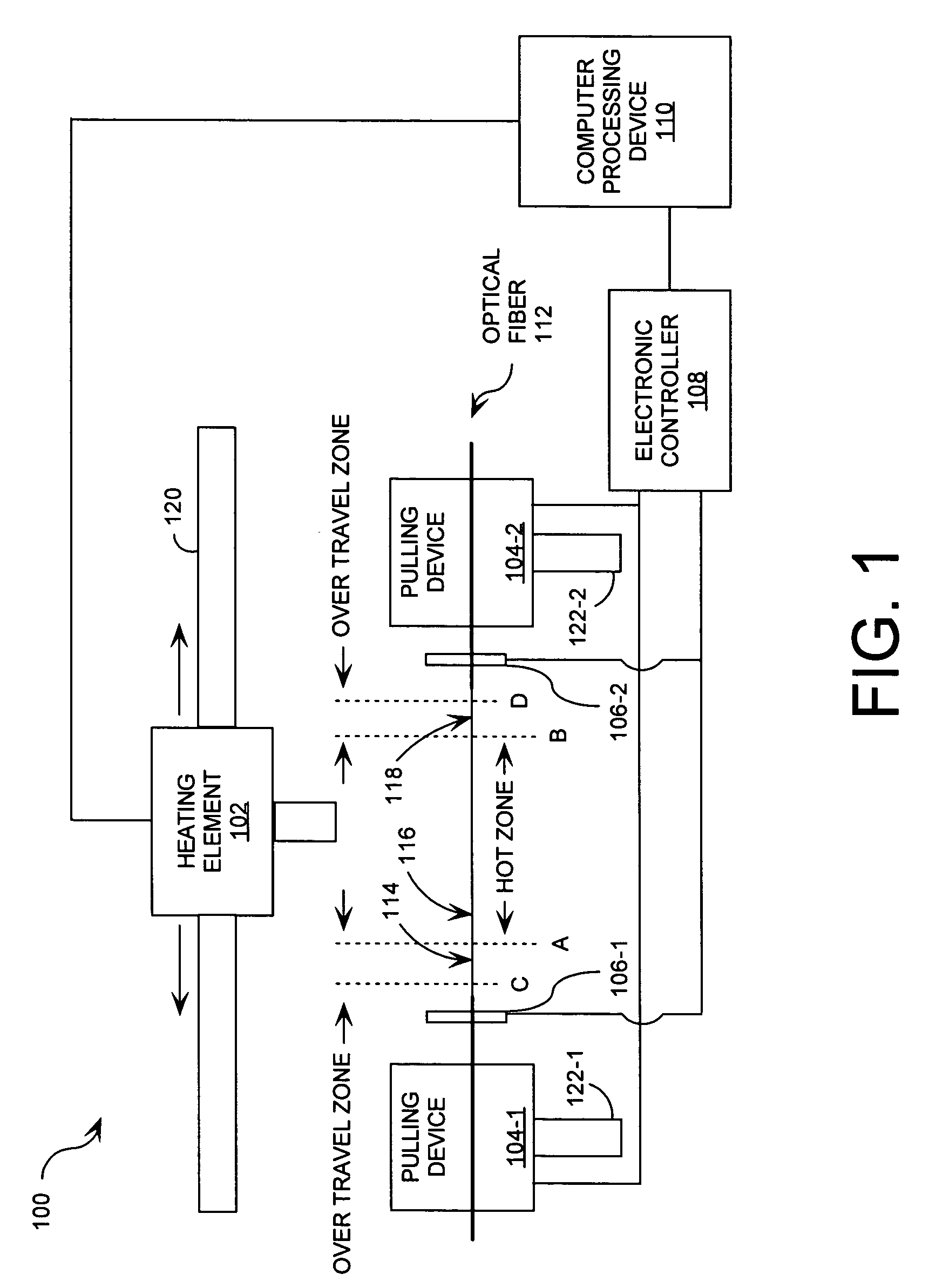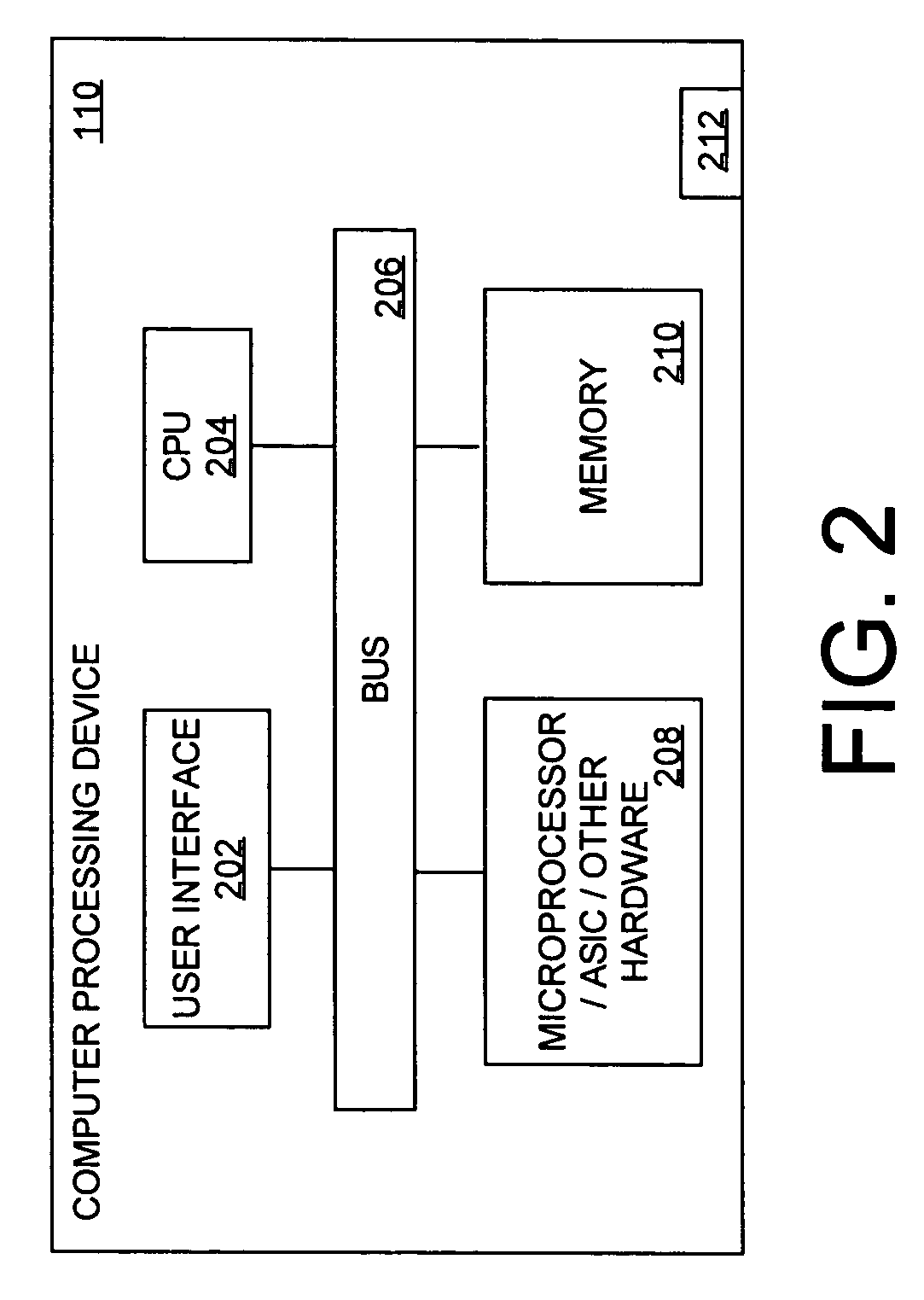Tapered optical fibers
- Summary
- Abstract
- Description
- Claims
- Application Information
AI Technical Summary
Benefits of technology
Problems solved by technology
Method used
Image
Examples
Embodiment Construction
[0019]FIG. 1 is a schematic illustration of a fabrication system 100 that is useful for understanding the invention. Fabrication system 100 is comprised of a heating element 102, pulling devices 104-1, 104-2, holding mechanisms 106-1, 106-2, an electronic controller 108, and a computer processing device 110. Fabrication system 100 can secure an elongated length of an optical fiber 112 between the holding mechanisms 106-1, 106-2 while thermal energy is applied to the optical fiber 112 as hereinafter described.
[0020]Optical fiber 112 is comprised of a glass optical fiber, a plastic optical fiber, and / or a quartz optical fiber. Glass optical fibers can be formed of silica glass, fluorozirconate glass, fluoroaluminate glass, chalcogenide glass, and / or any other suitable glass known in the art. Plastic optical fibers can be formed of a transparent plastic material, such as a polymethylmeth-acrylate (PMMA) polymer.
[0021]As shown in FIG. 1, optical fiber 112 is comprised of a first portion...
PUM
| Property | Measurement | Unit |
|---|---|---|
| Length | aaaaa | aaaaa |
| Energy | aaaaa | aaaaa |
| Tension | aaaaa | aaaaa |
Abstract
Description
Claims
Application Information
 Login to View More
Login to View More - R&D
- Intellectual Property
- Life Sciences
- Materials
- Tech Scout
- Unparalleled Data Quality
- Higher Quality Content
- 60% Fewer Hallucinations
Browse by: Latest US Patents, China's latest patents, Technical Efficacy Thesaurus, Application Domain, Technology Topic, Popular Technical Reports.
© 2025 PatSnap. All rights reserved.Legal|Privacy policy|Modern Slavery Act Transparency Statement|Sitemap|About US| Contact US: help@patsnap.com



